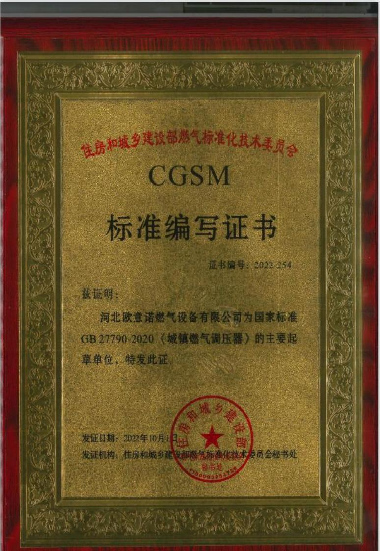
Dec . 28, 2024 04:24
Back to list
pressure reducing valve
Understanding Pressure Reducing Valves Function, Importance, and Applications
Pressure reducing valves (PRVs) are vital components in many fluid systems, particularly in water supply, HVAC (heating, ventilation, and air conditioning) systems, and industrial applications. These devices regulate the pressure of fluids, ensuring that the output pressure is maintained at a desired level irrespective of the supply pressure fluctuations. This article explores the function, importance, and applications of pressure reducing valves.
Function of Pressure Reducing Valves
At its core, a pressure reducing valve operates by reducing the high inlet pressure of a fluid to a lower, stable outlet pressure. The basic mechanism involves a spring-loaded diaphragm that controls an orifice through which the fluid flows. When the incoming pressure exceeds the setpoint, the diaphragm moves, adjusting the valve opening to decrease the flow, thereby regulating the downstream pressure.
The working principle can be broken down into several steps
1. Input Pressure Sensing The PRV continually senses the pressure of the fluid entering the system. 2. Pressure Regulation As the inlet pressure rises, the inherent force acts against the spring, causing a reduction in the orifice size. This adjustment leads to a decrease in the flow rate, which subsequently lowers the downstream pressure. 3. Stabilization When the downstream pressure reaches the desired value, the valve maintains this pressure as the diaphragm stabilizes, allowing for a balanced flow of fluid.
Importance of Pressure Reducing Valves
The significance of pressure reducing valves in various systems cannot be overstated. Here are a few reasons why they are essential
1. Protection of Equipment Many industrial systems and domestic appliances are designed to operate within specific pressure ranges. Excessive pressure can lead to equipment failures, leaks, or damage. PRVs help safeguard against such risks by maintaining stable output pressure.
2. Energy Efficiency In HVAC systems and process industries, high-pressure systems consume more energy. By reducing the pressure to optimal levels, PRVs contribute to energy savings and improved system efficiency.
pressure reducing valve

3. Water Conservation In municipal water supply systems, PRVs ensure that water is not wasted by reducing pressure. This is especially important in areas where infrastructure is aging, as lower pressure can mitigate leaks in the system.
4. Operational Safety In chemical processing or power generation, uncontrolled high pressures can be dangerous, leading to catastrophic failures. With PRVs in place, the environments remain safe for workers and equipment.
Applications of Pressure Reducing Valves
The applications of pressure reducing valves are varied and widespread. They are utilized in
1. Water Supply Systems Municipalities use PRVs to control the pressure of water entering residential and commercial properties, ensuring safe and efficient water delivery.
2. HVAC Systems In heating and cooling systems, PRVs maintain the pressure of steam or chilled water, optimizing system performance and providing comfort in buildings.
3. Industrial Processes In manufacturing environments, different equipment requires specific pressure levels. PRVs facilitate the precise control of pressure, enhancing the productivity and quality of processes.
4. Irrigation Systems In agriculture, PRVs help manage water pressure in irrigation systems, ensuring that crops receive adequate watering without damaging the system due to excessive pressure.
Conclusion
Pressure reducing valves are indispensable in maintaining fluid systems' efficiency, safety, and reliability. Their ability to automatically adjust fluid pressure protects equipment from damage, conserves energy, and promotes operational safety across various industries. With ongoing advancements in technology, the design and operation of PRVs continue to evolve, making them even more effective in addressing the challenges of today's fluid management needs. Whether in a residential plumbing system or an industrial setting, the presence of a pressure reducing valve ensures that processes run smoothly and safely.
Next:
Latest news
-
Safety Valve Spring-Loaded Design Overpressure ProtectionNewsJul.25,2025
-
Precision Voltage Regulator AC5 Accuracy Grade PerformanceNewsJul.25,2025
-
Natural Gas Pressure Regulating Skid Industrial Pipeline ApplicationsNewsJul.25,2025
-
Natural Gas Filter Stainless Steel Mesh Element DesignNewsJul.25,2025
-
Gas Pressure Regulator Valve Direct-Acting Spring-Loaded DesignNewsJul.25,2025
-
Decompression Equipment Multi-Stage Heat Exchange System DesignNewsJul.25,2025

